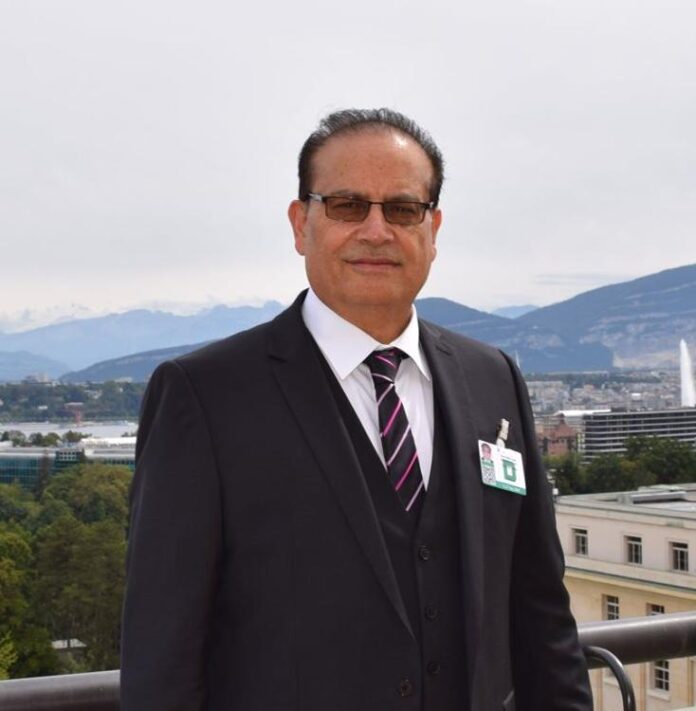By: Qamar Bashir
The helicopter carrying the Iranian President Ebrahim Raisi was 45 years old. It has earlier been used for commercial flights and later was earmarked for the presidential errands. Due to the sanction imposed on Iran since 1979, the sale of new helicopters, and provision of spare parts or upgrading of the helicopter could not be made, resultantly the helicopter was equipped with old age tracking and communication devices faced significant limitations.
It was only equipped with outdated Emergency Locator Transmitters (ELTs) operating which often failed to activate during crashes and had high false alarm rates, making it difficult to locate downed aircraft. Radar tracking was limited by range and terrain, creating blind spots in mountainous or remote areas, while large expanses of ocean and remote regions were beyond radar reach.
Manual position reporting by pilots was prone to human error and communication blackouts due to signal interference and range limitations.
Though ground-based navigational aids like VOR and NDB provided general directional information to the downed helicopter it lacked the precision needed for pinpointing crash locations. Additionally, while Flight Data Recorders (FDRs) and Cockpit Voice Recorders (CVRs) were valuable for post-crash investigation, they did not assist in the immediate location of the aircraft.
Had there been no sanction the helicopter carrying important passengers could have long ago been replaced, or upgraded with latest tracking devices combining advanced GPS, ADS-B, and satellite communication technologies. These devices include Emergency Locator Transmitters (ELTs) like the Kannad Integra and Artex 345, which use integrated GPS and dual-frequency transmitters for precise location tracking.
It could have been equipped with Portable aviation GPS units such as the Garmin aera 660 and Garmin D2 Mach 1 Aviator Smartwatch providing detailed flight mapping and real-time data, enhancing search efforts.
Additionally it could also have been equipped with the Garmin GDL 52, a portable ADS-B receiver, and the Garmin inReach Mini satellite communicator which offers comprehensive tracking and SOS functionalities, ensuring effective rescue operations even in remote areas.
Moreover, even the weather forecast system due to sanctions is outdated and does not give a full picture to the navigators about the weather conditions. Had it been given the true picture, the president may have advised to postpone the flight, until flying conditions are improved.
This is not the only tragedy faced by Iranian nations due to the sanctions which had made air travel extremely dangerous and perilous, and have so far resulted in the loss of 2000 precious lives due to the accidents which could have been avoided if the flying objects were upgraded, refurbished or replaced with new ones.
There have also been conspiracy theories circulating not only in the social media but as well as traditional media saying that somehow Israel was involved in this crash to avenge the Iranian attack on Israel with drones, rockets and cruise missiles a few days ago.
If this theory hold ground now or any time in future the entire region will be plunged in the total chaos as the alleged Iranian proxies in the middle east like Hamas, Hezbollah, Iraq Brigade, Houthis and Iran friendly armed groups in Syria will do whatever in their power to avenge attack on Iran’s second most important leaders who is known to be ultra hardliner, highly religious and pro revolutionary person, and was the most likely aspirant to replace the religious head of Iran Ayatollah Khomeini.
Moreover, in a scenario which so far has no concrete evidence, but cannot be ruled out completely, if Israel was blamed for the crash of a helicopter carrying the Iranian president, Iran would likely react with outrage, accusing Israel of an act of war, which could lead to military mobilization and retaliatory threats.
The regional implications would be significant, with potential destabilization across the Middle East. Globally, the United States, as a key ally of Israel, would be drawn into the conflict, facing pressure to support Israel while trying to prevent a full-scale war. US-Iran relations would likely deteriorate further, impacting diplomatic efforts and nuclear deal negotiations. Internationally, powers like Russia, China, and the European Union would call for restraint and engage in intense diplomatic efforts to de-escalate the situation.
The global oil markets would likely see a spike in prices due to fears of supply disruptions, affecting economies worldwide. Long-term effects could include accelerated nuclear proliferation in the Middle East and shifts in geopolitical alliances as countries reassess their security and foreign policy strategies.
At least as if now (6.07 am, 20 May, 2024) the darkness the weather in the mountainous region of in local language called Tawal located between Azerbaijan and Iran is still under deep fog, very cold and raining which as turned the terrain muddy and slippery making ground search almost impossible though at this time there are 42 search teams on the site and all army and revolutionary guard resources have been committed but there is no good news so far.
The Turkish drone however succeeded in locating heat emitting objects in the vicinity giving some kind of concrete location but reaching this location will take quite some time.
Meanwhile, the Iranian media has been changing the semantic of the incident from hard landing to accident and from accident to crash. The key differences lie in the severity of impact, extent of damage, likelihood of injuries, and the recoverability of the aircraft, with hard landings being less severe than crashes, which typically involve complete destruction and severe consequences, thus preparing the Iranian people for the worst case scenario.
If the Iranian president survived an air crash, the Iranian nation and Iran’s proxies around the world would likely celebrate his survival as a sign of resilience and strength. In Iran, there might be public gatherings, speeches, and displays of support for the president. Iranian proxies in other countries, such as Hezbollah in Lebanon or various militias in Iraq, might also organize events to express their support and loyalty.
On the other hand, if the Iranian president died in the air crash, the reaction would likely be one of shock and mourning in Iran and among its proxies. There would likely be official mourning periods, public displays of grief, and statements of condolences from Iran’s allies and proxies. The death of the president could also lead to a period of uncertainty and potential power struggles within Iran, which could have implications for regional stability and Iran’s foreign policy.
Let us hope and pray that the Iranian President (63) survives.
By: Qamar Bashir
Former Press Secretary to the President
Former Press Minister to the Embassy of Pakistan to France
Former MD, SRBC

















